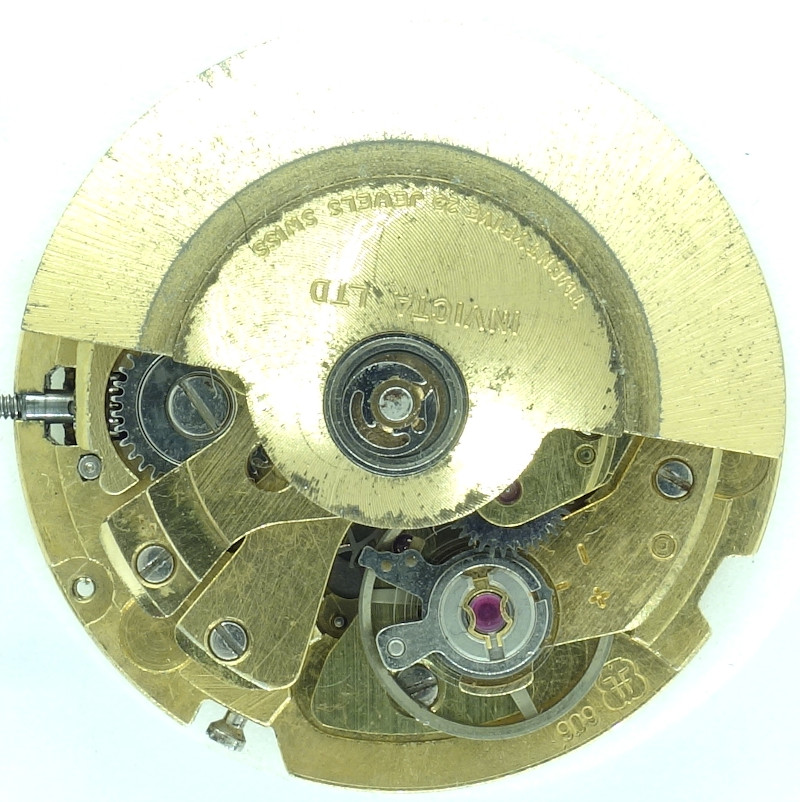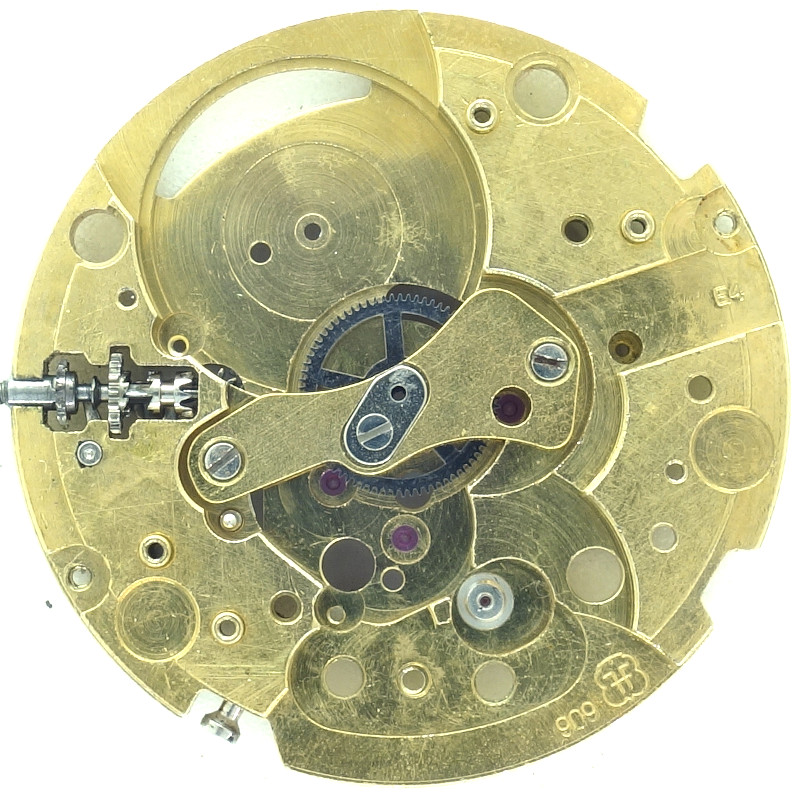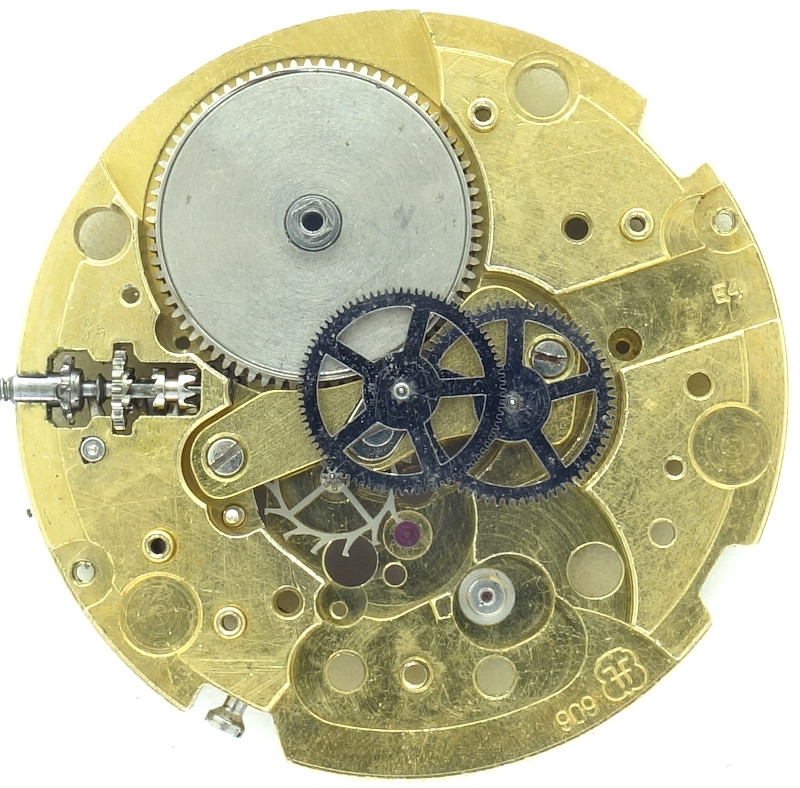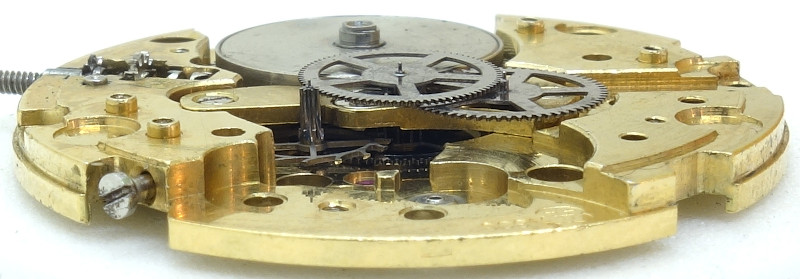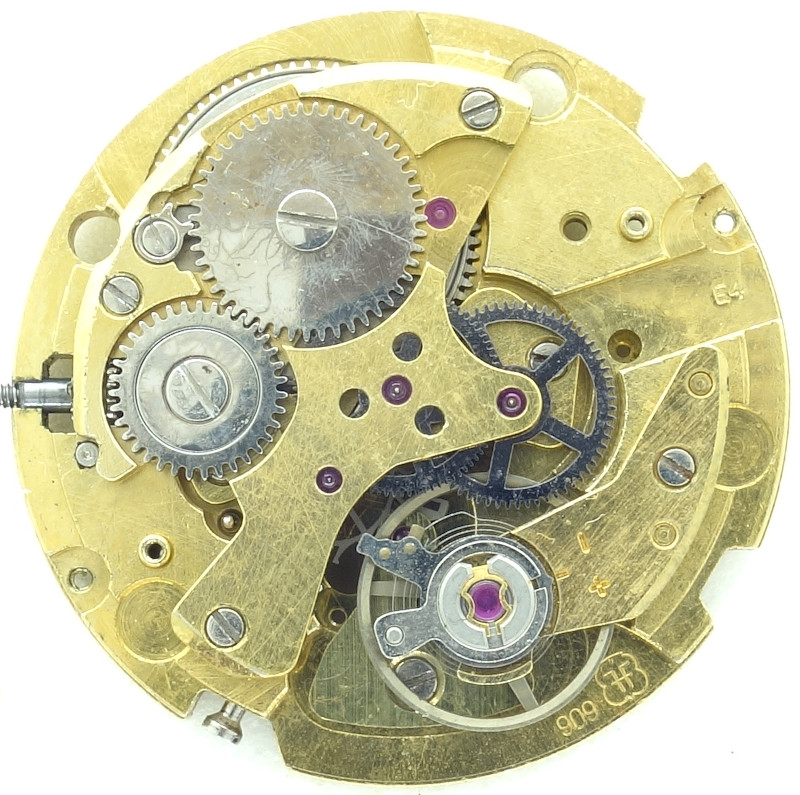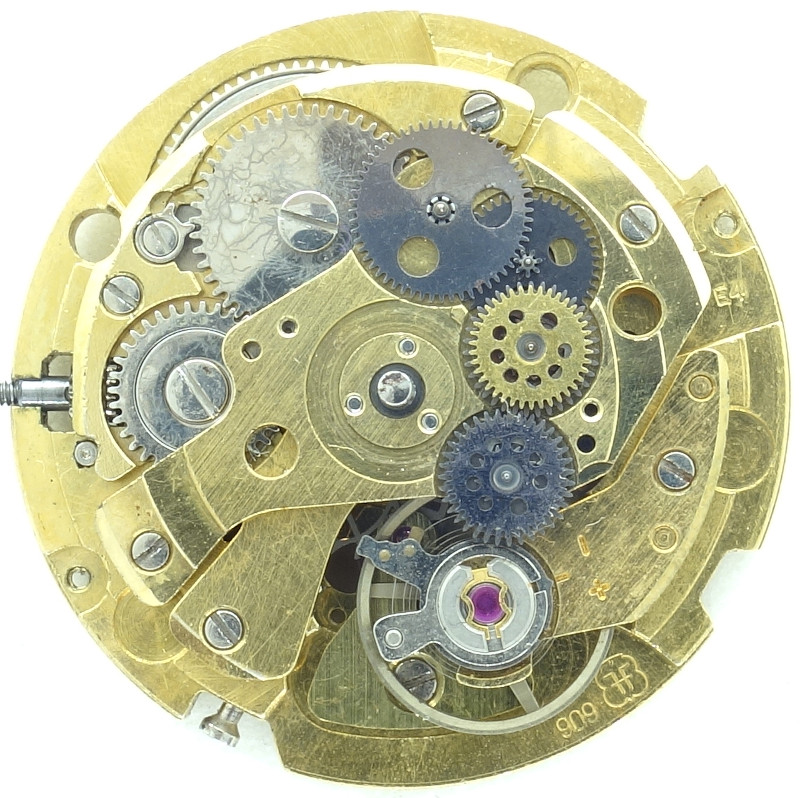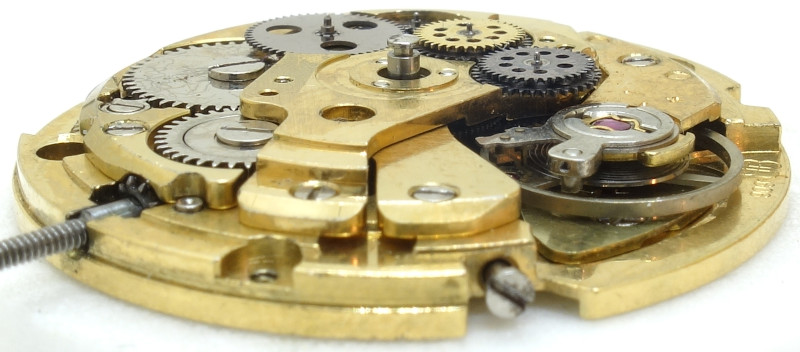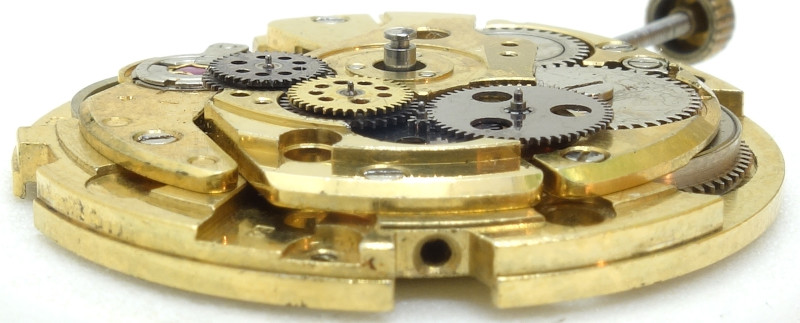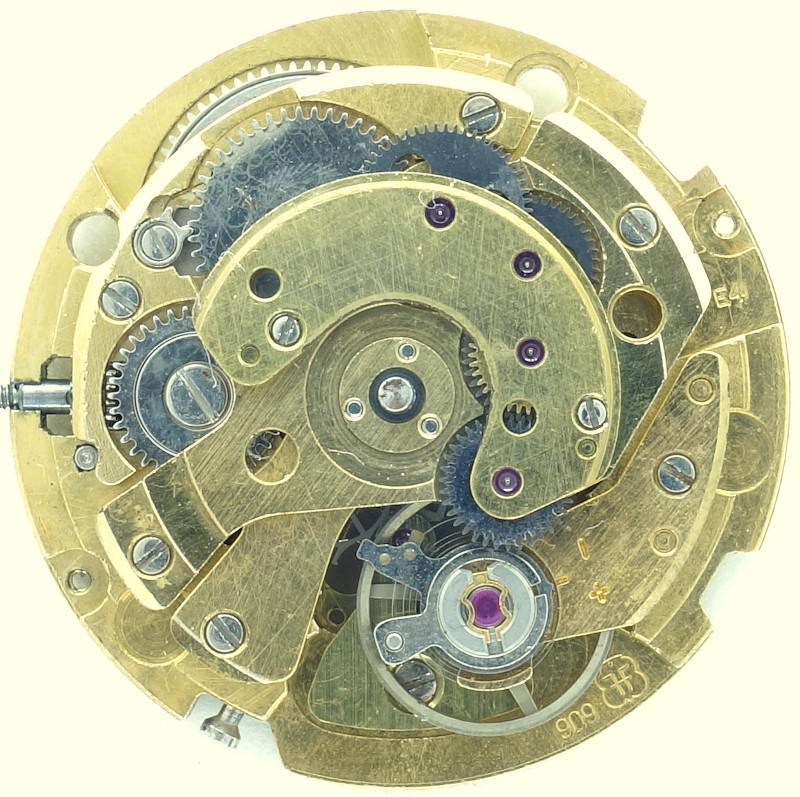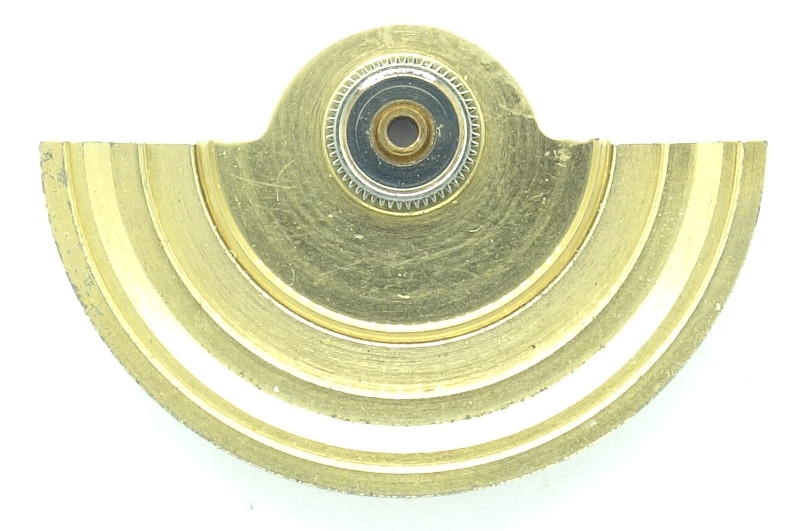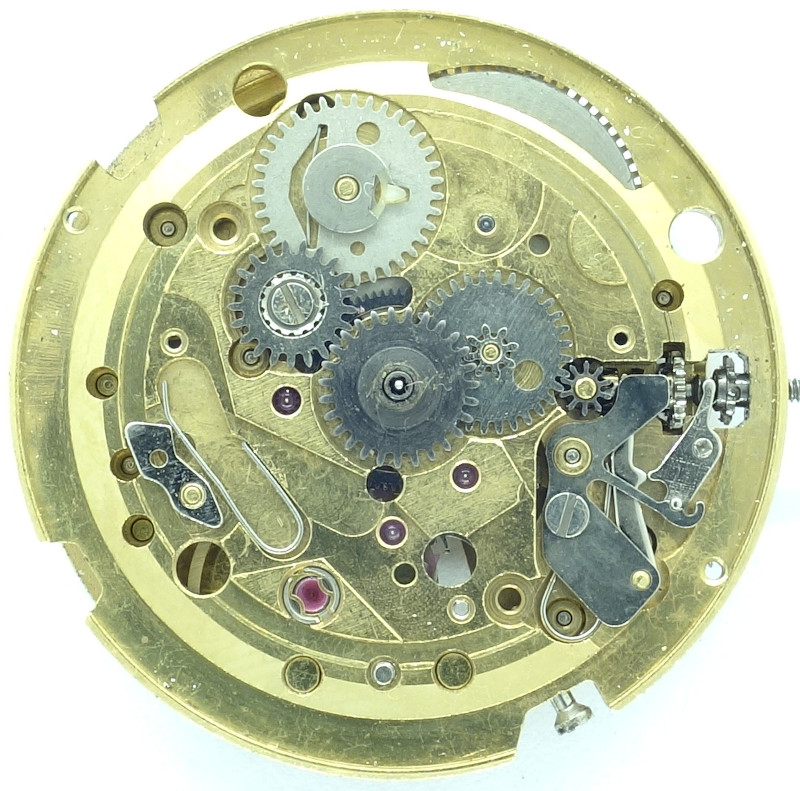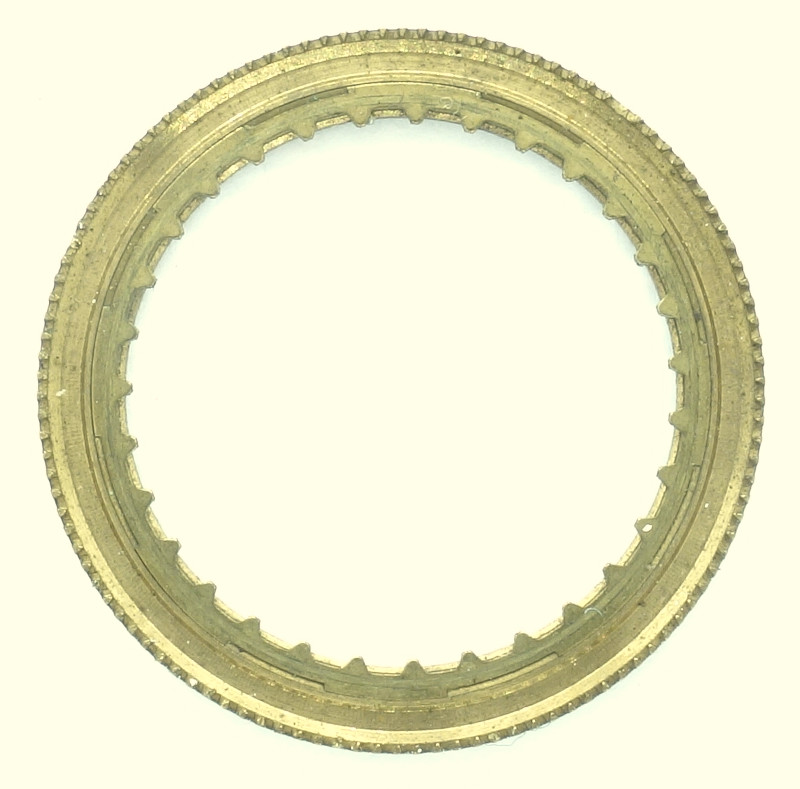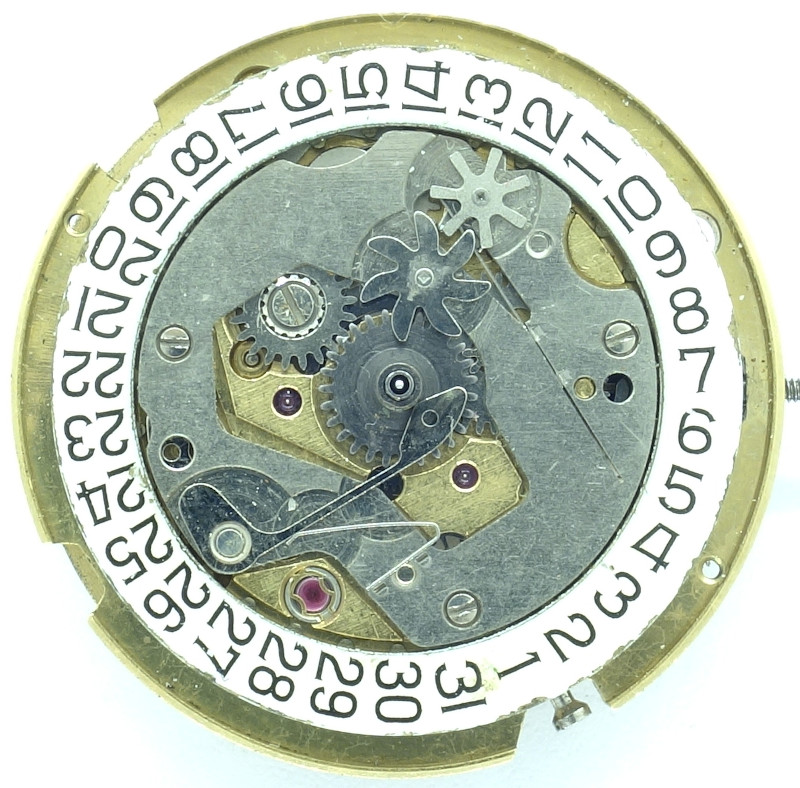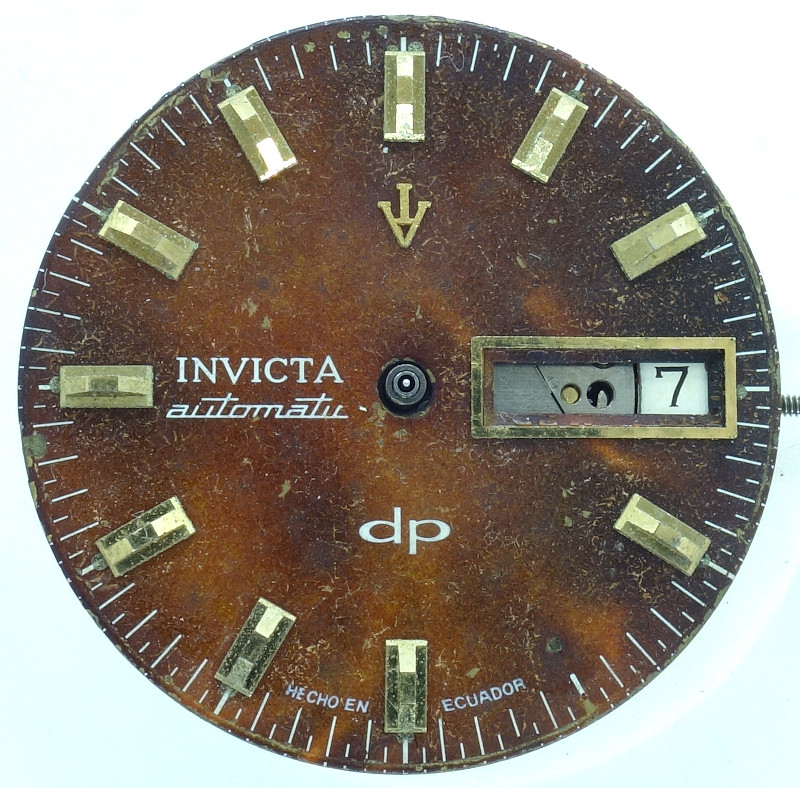Description
If you think of FHF, selfwinding movements are probably the last, you’ll be thinking of. Besides their spectacular, but not un-problematic “Fotomatic”, FHF was more or less a blank page in this area.
In the early 70ies, the caliber series 90-5 was launched, whose latest and best equipped version was the FHF 909, but it couldn’t leave a lasting impression. So, these 11 1/2 ligne calibers are much more rare, compared to their contemporary ETA or AS counterparts.
The FHF 909 is one of the few calibers, where even the minute wheel is ruby beared. In combination with the golden tone of the plate and the bridges, it makes a valuable impression.
The gear train is old-fashioned with a directly driven center minute wheel.
The center minute wheel is followed by the third wheel, the center seconds wheel and finally the filigree escape wheel.
The comparatively small balance of the FHF 909 is beared in two Incabloc shock protections and beats rather slow with 21600 A/h. The effective length of the hairspring can only be adjusted at the hairspring key directly.
The FHF 909 is one of the rare selfwinding movements, which does not have a manual wind base caliber. It was probably constructed as a true selfwinding movement from the beginning.
FHF did not take any risks when developing this selfwinding mechanism. As on the common ETA movement, a pawl changer was used, with the disadvantage, that its gears spin very fast when the movement is manually wound, just like on the ETA selfwinding movements.
The oscillating weight is axle beared and engages with the upper to gears.
After two reduction stages, the mainspring barrel is reached.
Without oscillating weight, the construction reminds stronly of those of the ETA. No wonder, because at that time, both, ETA and FHF were under the roof ot the Ebauches SA.
The oscillating weight is a half-circle. It it attached with a spring washer to the axle.
The caliber 909 has got an interesting date correcting mechanism: The rate ring has got teeth on its underside. In the middle crown position, the outermost gear of the crown stem (you can see it at 3 o’clock) engages with the sprocket of the date ring and turns it back or forth.
The weekday disc is advanced by two star-shaped switching wheels. If the date correcting mechanism turns back the date, the upper switching wheel disengages, so that the weekday is not turned back. With that mechanism, day and weekday can be corrected individually, but it seems, that if the date is advanced, the weekday also jumps to the next day, which is probably not, what you want at the end of a 30 day month, because in that case, the weekday has to be advanced six times together with the date and the date has to be turned back six times.
If the FHF 909 uses such a weird date setting mechanism is unknown, since on the archived specimen, the weekday disc is missing.
The FHF 909 is not really a nice movement and it probably has got a weird date quickset mechanism. Maybe this was one of the reasons (besides the upcoming quarz movements and the powerful competitors in the field of selfwinding movements, especially ETA and AS), why it was not really successful and remained a kind of exotic movement.
Technical data
| Manufacturer: | FHF |
| Caliber: | 909 |
| Size: | 11 1/2''' (measured: 25,6mm) |
| Height: | 6,0mm |
| A/h: | 21600 |
| lift angle: | 52° |
| Number of jewels: | 25 |
| Balance types: | Nickel anular balance (three legs) |
| Shock protection(s): | Incabloc |
| Balance bearing / direction hairspring: | Clockwise |
| Moveable stud: | yes |
| Adjust mechanism: | Hairspring key |
| Construction: |
|
| Construction type: | solid construction |
| Winding mechanism: | yoke winding system |
| Setting lever spring: | 3 hole(s) |
| Features: |
|
| Production period: | 1976 - ? |
| References: | Flume: K3 N1 - |
| Inventory number: | 20040 |
